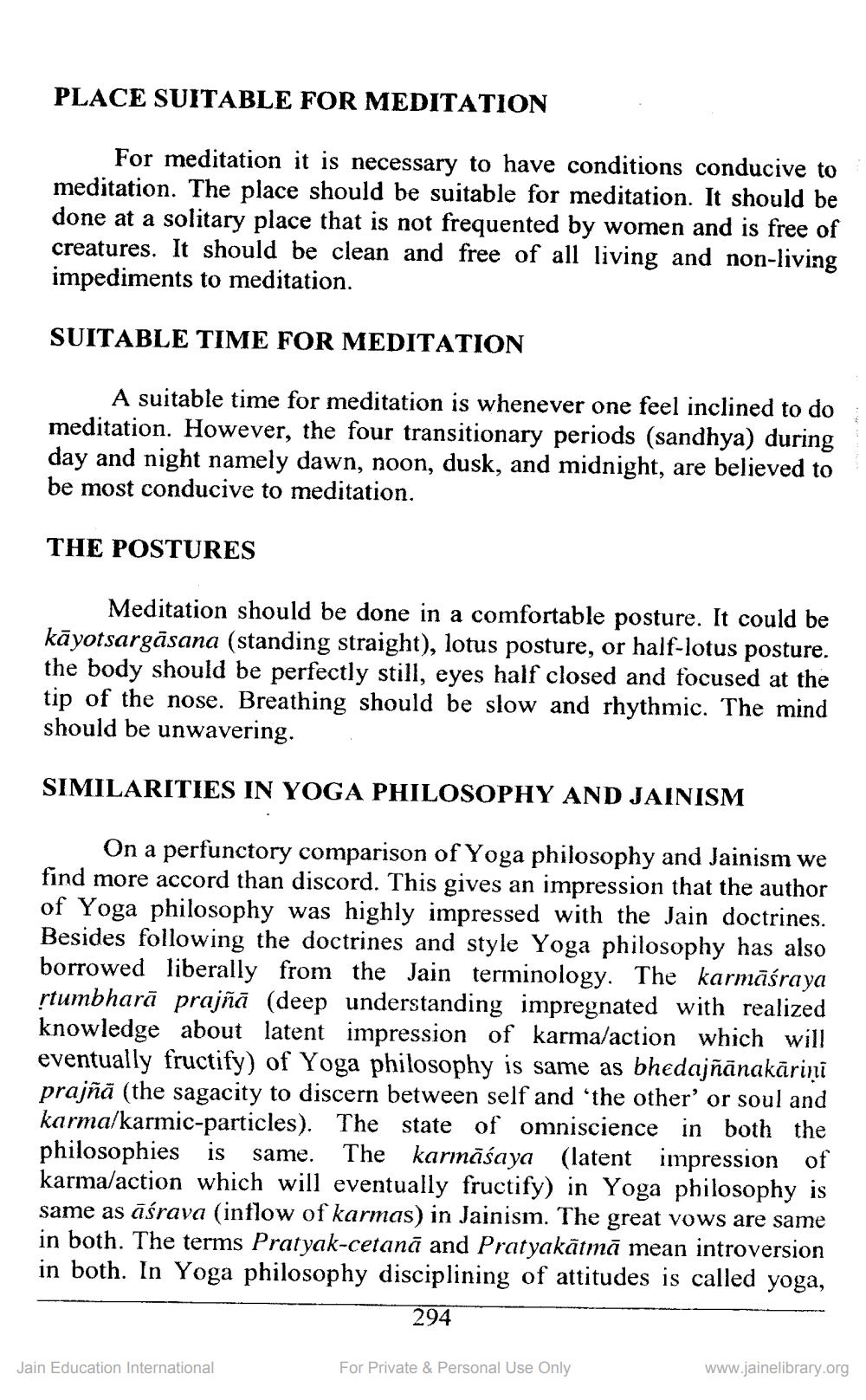________________
PLACE SUITABLE FOR MEDITATION
For meditation it is necessary to have conditions conducive to meditation. The place should be suitable for meditation. It should be done at a solitary place that is not frequented by women and is free of creatures. It should be clean and free of all living and non-living impediments to meditation.
SUITABLE TIME FOR MEDITATION
A suitable time for meditation is whenever one feel inclined to do meditation. However, the four transitionary periods (sandhya) during day and night namely dawn, noon, dusk, and midnight, are believed to be most conducive to meditation.
THE POSTURES
Meditation should be done in a comfortable posture. It could be kāyotsargāsana (standing straight), lotus posture, or half-lotus posture. the body should be perfectly still, eyes half closed and focused at the tip of the nose. Breathing should be slow and rhythmic. The mind should be unwavering.
SIMILARITIES IN YOGA PHILOSOPHY AND JAINISM
On a perfunctory comparison of Yoga philosophy and Jainism we find more accord than discord. This gives an impression that the author of Yoga philosophy was highly impressed with the Jain doctrines. Besides following the doctrines and style Yoga philosophy has also borrowed liberally from the Jain terminology. The karmāśraya stumbharā prajñā (deep understanding impregnated with realized knowledge about latent impression of karma/action which will eventually fructify) of Yoga philosophy is same as bhedajñānakariņi prajñā (the sagacity to discern between self and the other' or soul and karma/karmic-particles). The state of omniscience in both the philosophies is same. The karmāśaya (latent impression of karma/action which will eventually fructify) in Yoga philosophy is same as āśrava (inflow of karmas) in Jainism. The great vows are same in both. The terms Pratyak-cetanā and Pratyakātmā mean introversion in both. In Yoga philosophy disciplining of attitudes is called yoga,
294
Jain Education International
For Private & Personal Use Only
www.jainelibrary.org




